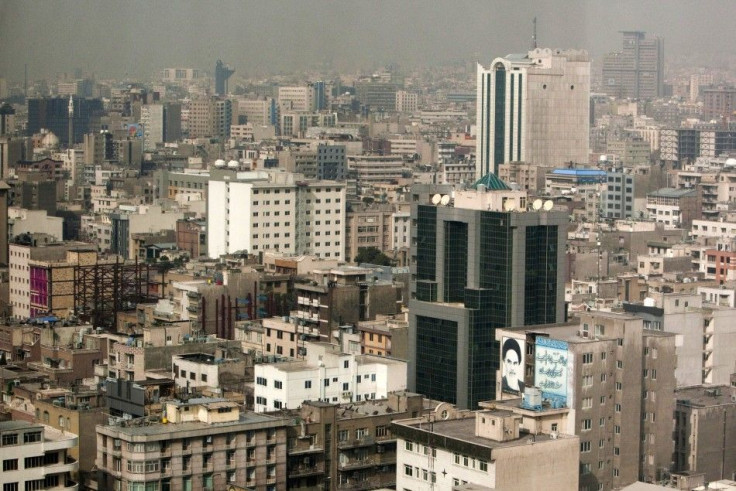Deadly Air Pollution Shuts Down Tehran, Harkens Back To London’s Killer Smog Of 1952

Already reeling under Western economic sanctions and a plunging currency, the residents of Iran’s capital city of Tehran must cope with yet another crisis -- dangerous pollution wrought by rapid urbanization.
The smog in Tehran was so toxic on Monday that city officials, including Health Minister Marzieh Vahid Dastjerdi, urged people in the 15 million-strong metropolis to flee.
Municipal officials also ordered the closing of schools, universities, government agencies and many businesses, including factories, at least through Wednesday.
According to IRNA, Tehran’s Governor Morteza Tamadon ordered hospitals and banks to remain open but asked residents to skip unnecessary travel.
But shutting down commercial entities comes at a cost.
"Each day of [shut-down] in the five biggest cities [Tehran, Mashhad, Isfahan, Arak and Karaj] costs the economy [$275 million],” politician Mohammed Reza Tabesh told the ISNA news agency.
According to Agence France-Presse, the unhealthy air choking the city led to a 15 percent spike in hospital admissions in recent days, primarily due to people suffering headaches, respiratory problems and nausea.
"Air quality remains at dangerous levels, and the concentration of polluting emissions has increased in the past 24 hours," the chief of Tehran's air monitoring services, Youssef Rashidi, told the Iranian Labour News Agency, or ILNA.
Air pollution tends to peak in the autumn, AFP noted, as the haze and fumes spewed by thousands of cars get trapped between the mountains that surround Tehran.
Compounding woes are the fact that many Iranians drive old and inefficient vehicles, while public transport extensions have failed to attract sufficient ridership to ease pollution. In addition, sanctions on fuel imports prompted Iranian producers to supply card with its own lower-grade (i.e. more polluting) petrol.
According to Yale University’s Environmental Performance Index, Iran finished near the bottom, ranking 114 out of 132 nations surveyed in 2012.
Iran’s Ministry of Health estimates that between 4,000 and 5,000 people die every year in Tehran due to air pollution.
Interestingly, while the Iranian regime clamps down hard on political dissent, it tolerates environment activists who complain about pollution and nuclear power.
Iranian environmentalist Mohammad Darvish told the Los Angeles Times the country’s green movement "is budding, but it is far from being a movement. But I am sure the environment will be a full-fledged movement one day, and Iran will have Green [political] parties that will send members to parliament."
"I am not a nuclear scientist, but I believe producing nuclear energy to be used for electricity is too costly and prone to environmental hazards," he commented regarding Iran’s controversial atomic program. "In any natural disaster, or if Israel attacks us, then nuclear pollution is our most dangerous hazard. ... Why should we increase our vulnerability by using nuclear plants for energy, while more environmentally friendly technology is available?"
Ironically, Tehran’s pollution dilemma comes exactly 60 years after deadly smog thousands of miles away in London killed up to 4,000 people, largely from respiratory diseases.
In December 1952, Londoners suffered through four days of unusually thick and heavy smog, leading to the halt of above-ground public transportation due to poor visibility.
"The smoke-like pollution was so toxic it was even reported to have choked cows to death in the fields," city officials stated.
BBC reported that a very cold and snowy winter, which forced residents to burn an exceptional amount of coal at home to keep warm, exacerbated the discomfort.
Although the killer smog led to environmental legislation by the mid-1950s, poor air remains a serious issue in London. ClientEarth, an environmentalist group, estimates Londoners die each year due solely to air pollution. Indeed, since 1952, the number of privately owned cars in London has skyrocketed.
"The UK is failing to meet European Union air-quality standards,” a ClientEarth spokesman told BBC.
"London is thought to have the highest levels of nitrogen dioxide of any capital city in the EU, with levels on some of London's busiest roads, such as Brixton Road and Putney High Street, currently more than triple legal limits.”
© Copyright IBTimes 2024. All rights reserved.




















